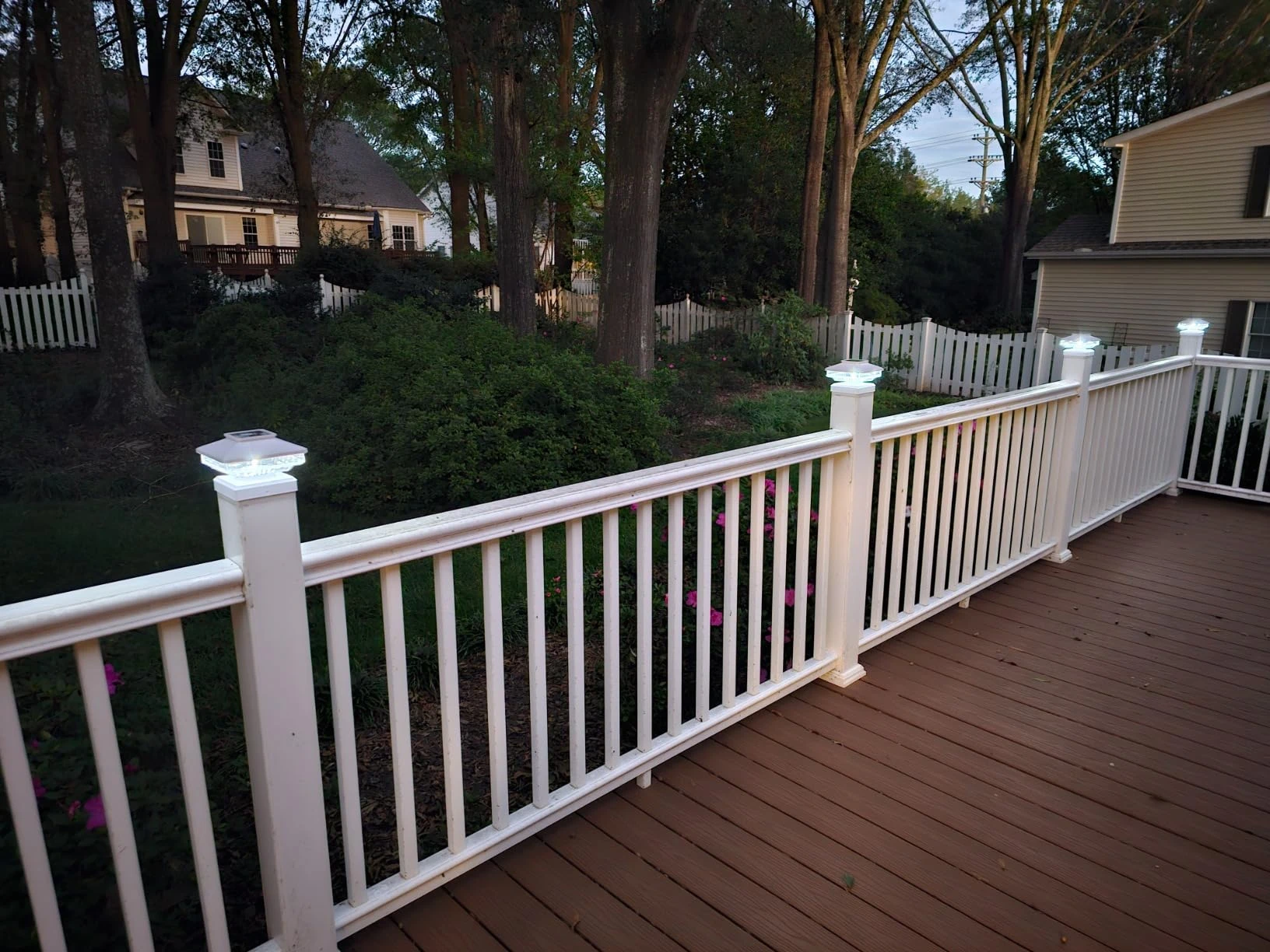The Importance of Seasonal Maintenance for Solar Post Caps
Solar post cap lights are an eco-friendly and stylish way to illuminate outdoor spaces, but their performance can falter without proper care. Each season brings unique challenges—scorching heat, heavy rain, frost, or dust storms—that can degrade components like solar panels, batteries, and light covers. Neglecting maintenance often leads to issues such as battery swelling, yellowed light covers, or short-circuited wiring. With the right seasonal care, you can extend the lifespan of your vinyl fence post caps 5×5 solar light from an average of 2-3 years to over 5 years while keeping brightness degradation below 15%. This guide provides a comprehensive plan to ensure your lights shine brightly year-round.
Spring Renewal: Reviving Your Lights for the Wet Season
Spring is the time to refresh your solar post caps after winter’s harsh conditions. The focus is on cleaning, inspecting, and reactivating components to handle increased moisture.

Cleaning and Inspection
Start by cleaning the solar panel and light cover to restore light transmission. Use a soft cloth and a 1:10 diluted white vinegar solution to remove winter dust, bird droppings, or grime. Avoid abrasive materials like steel wool, which can scratch surfaces and accelerate UV damage. Inspect the solar panel’s edge sealant for cracks, as spring rains can cause water seepage if seals are compromised.
Next, check the structural integrity of the post cap. Winter’s freeze-thaw cycles may loosen screws, so tighten them with a screwdriver. Examine the connection between the post cap and the post, applying waterproof silicone sealant to prevent rain infiltration.
Battery Activation and System Testing
To rejuvenate the battery, perform a deep charge-discharge cycle. On consecutive sunny days, let the light run until it automatically shuts off, then charge it for 12 hours to activate the battery. Test the light sensor by covering the solar panel; the light should activate within 10 seconds. If the response is sluggish, consider replacing the sensor or consulting a professional.
Summer Heat Protection: Managing Heat and Storms
Summer’s high temperatures and heavy rains pose dual threats to vinyl fence post caps 5×5 solar light. Proper care ensures longevity and efficiency during these challenging months.
Heat Management
Excessive heat can damage batteries and reduce efficiency. Install a shade board 20 cm above the post cap to lower surface temperatures below 45°C. Check the ventilation holes at the base of the light and clear any dust or debris using compressed air. To protect the battery during peak heat (12 PM to 4 PM), use the controller’s “sleep mode” to minimize charging and discharging cycles, reducing thermal stress.
Storm-Proofing
Heavy summer rains demand robust waterproofing. Replace aging silicone sealing rings before the season begins, as degraded seals can allow water ingress. Test the IP protection rating by spraying the post cap with a high-pressure water hose from 1 meter away for 3 minutes; the interior should remain dry. To prevent water accumulation inside the post, drill 5mm drainage holes at the base and apply rust-proof coating to the drilled areas.
Fall Preventative Maintenance: Preparing for Winter
Fall is the ideal time to optimize your solar post caps for shorter days and colder temperatures, ensuring they’re ready for winter’s challenges.
Boosting Charging Efficiency
Adjust the solar panel’s tilt angle to 45°-60° in the Northern Hemisphere to capture low-angle sunlight. Clear away fallen leaves or debris that may accumulate on the panel. Use a multimeter to check the battery voltage, which should be at least 3.2V. If it’s below 2.8V, replace the battery. After three consecutive sunny days, ensure the battery charge exceeds 80% to maximize winter performance.
Freeze Protection
To prevent cold-weather damage, wrap metal posts with at least 1 cm of insulating foam to avoid brittleness. Apply an anti-fog coating to the light cover to prevent morning dew from clouding the surface, which can reduce light output.

Winter Extreme Weather Care: Battling Cold and Snow
Winter’s freezing temperatures and snow require special attention, especially in harsh climates or coastal areas.
Cold-Weather Strategies
In extremely cold regions, remove lithium batteries and store them indoors at 5°C-25°C to prevent freeze damage. For temporary power, use a 5V/2A external power bank to keep the lights operational. To manage snow accumulation, install a sloped deflector (at least 30° incline) on top of the post cap. Clear snow from the solar panel using a soft brush, avoiding hot water, which can crack the panel.
Coastal and High-Humidity Areas
In coastal regions, salt mist can corrode metal components. Replace standard screws with 304 stainless steel screws and wipe metal parts monthly with alcohol and a soft cloth. Place silica gel desiccant packets inside the light housing, replacing them quarterly to combat moisture.
Common Maintenance Mistakes to Avoid
Improper care can shorten the life of your solar post caps. Avoid these pitfalls:
- Using steel wool to clean light covers: This scratches surfaces, hastening UV degradation.
- Ignoring snow buildup: Prolonged snow coverage can starve the battery, leading to failure.
- Using the same charging mode year-round: Failing to adjust charge-discharge thresholds for seasonal light variations reduces efficiency.
Essential Tools and Materials
Here’s a seasonal checklist for tools and materials:
- Spring: Soft brush, silicone gun, neutral sealant, white vinegar.
- Summer: Thermometer, compressed air canister, heat-dissipating silicone grease, waterproof tape.
- Fall: Angle ruler, multimeter, battery activator, insulating foam.
- Winter: Snow brush, desiccant, anti-freeze lubricant, power bank.
Long-Term Maintenance and Upgrades
Maintaining a maintenance log is key to tracking performance. Record dates, actions, and replaced parts (e.g., battery batch, sealant type). Apps like “Home Maintenance” can schedule reminders for seasonal tasks. For optimal performance, upgrade solar panels every two years to gain 5%-8% efficiency improvements. For older units, consider retrofitting with smart temperature-control modules to regulate charging voltages automatically.
Conclusion: Year-Round Care for Lasting Illumination
With proper seasonal maintenance, solar post cap lights can achieve a fault rate below 5%, compared to 35% for neglected units. Start by checking seals before the rainy season and testing battery performance before fall. According to the National Renewable Energy Laboratory (NREL), seasonal care can boost solar device efficiency by 27%. Consumer Reports notes that maintained lights lose only 12% brightness after three years, compared to 60% for unmaintained ones.
Take Action Now:
- Inspect seals to prepare for spring rains.
- Test battery performance before fall to ensure winter reliability.
- Share your “solar light freeze-proofing tips” online for a chance to win a professional maintenance kit!
By following this guide, your vinyl fence post caps 5×5 solar light will deliver consistent, vibrant illumination through every season.


Leave a Reply